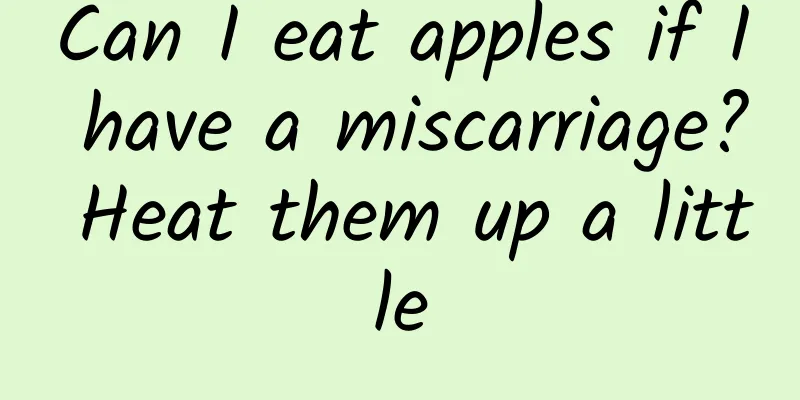What women are not suitable for medical abortion?

|
Medical abortion is also known as drug abortion. Medical abortion against early pregnancy refers to the use of injections or medications to achieve artificial abortion in the early stages of pregnancy without surgery. However, there are also people who are not suitable for medical abortion. Let’s take a look at what medical abortion is. Medical abortion is also known as medical abortion. Medical abortion against early pregnancy refers to the use of injections or medications to achieve artificial abortion in the early stages of pregnancy without surgery. It is good news for early pregnant women - using the latest drugs, only 9 pills are needed to terminate the pregnancy. Medical abortion refers to the use of injections or medications to achieve artificial abortion in the early stages of pregnancy without surgery. The use of drugs to terminate pregnancy is the latest development in the past 20 years. The commonly used drugs are mifepristone (Ru486) and prostaglandins in combination. The former causes degeneration and necrosis of the uterine decidua and softening of the cervix. The latter causes the uterus to contract and promote the expulsion of the embryo. Medical abortion is simple, effective, non-invasive, and avoids complications that may be caused by entering the uterine cavity. It is currently used to terminate pregnancies within 7 weeks.Who cannot have medical abortion? Every year after the winter vacation, Spring Festival or Valentine's Day, the obstetrics and gynecology departments of various hospitals will experience a small peak in artificial abortions, most of which are performed on unmarried women, even some girls aged 17 or 18. Usually, pregnancy within 42 days of amenorrhea is called early pregnancy. Medical abortion refers to the use of drugs to prevent early pregnancy, also known as inducing menstruation to stop pregnancy, that is, abortion if pregnant and inducing menstruation if not pregnant. No surgery is required, and the pain is less. After contraceptive failure, women hope to choose an abortion method with good effects and few side effects. Medical abortion without surgery is often their first choice. The drug currently used in clinical practice is domestically produced mifepristone, which is a progesterone antagonist. When used in combination with prostaglandins, it can increase the success rate of abortion to about 90%. Medical abortion is not without risk, and has strict indications and contraindications. Generally, women who have a positive urine pregnancy test within 49 days of amenorrhea and want to terminate their pregnancy must undergo B-ultrasound examination before using medical abortion. Only after confirming that it is an intrauterine pregnancy and understanding the location and size of the gestational sac can they decide whether to have a medical abortion. If the gestational sac is in the uterine cornu or close to the cervix, medical abortion cannot be accepted, and heavy bleeding is likely to occur, which is life-threatening. There are also some women who cannot choose medical abortion. For example, those who are too young (less than 20 years old) or too old (more than 40 years old); those who have severe menstrual irregularities; those who have heart disease, hepatitis, endocrine diseases, blood system diseases, digestive tract ulcers, asthma and glaucoma; those who have ovarian cysts and gynecological tumors; those who are pregnant with an IUD; those who have a history of failed medical abortion or long vaginal bleeding after medical abortion cannot choose medical abortion. In addition, those who have recently undergone artificial abortion or have surgical scars on their uterus, and those who use progesterone and other pregnancy-preserving drugs after pregnancy should also carefully choose medical abortion, as these factors can easily increase the failure rate of medical abortion and cause another uterine curettage. Some early pregnant women will have obvious adverse reactions after taking the drugs, and they should stop taking the drugs immediately to avoid further effects of the drugs. Finally, it should be noted that women who want to have medical abortion in early pregnancy should avoid going to medical institutions that do not have the conditions and technical capabilities to carry out medical abortion. Only by strictly following the requirements of medical abortion, ensuring preoperative diagnosis, intraoperative observation, and postoperative follow-up, can the pregnancy be terminated safely. |
<<: Why is recovery after medical abortion important?
>>: How to avoid infection after medical abortion
Recommend
Don't take it lightly! US: Excessive fructose intake can affect memory
Whether adults or children, few can resist the te...
Women should pay attention to the causes of ectopic pregnancy
Ectopic pregnancy is a common female disease. In ...
What if my period is delayed for 5 days and the amount is less?
What if my period is delayed for 5 days and the a...
Understanding the symptoms of menopause in women
Everyone knows that women have menstruation every...
Being thin is not necessarily beautiful! Sculpting the perfect buttocks, 2 key points to raise the buttocks position to make a big difference in visual effect
What is "Truth Butt"? The origin of the...
To rescue a loose lower body, the knees cannot go beyond the toes when squatting?
Many office workers who have no exercise habits, ...
Can I take ibuprofen for dysmenorrhea?
Can I take ibuprofen for dysmenorrhea? People wit...
How to maintain after minimally invasive abortion? 7 quick tips to help you recover quickly
Although minimally invasive abortion is not a maj...
Can’t lose weight? Beware of bone crookedness affecting body shape
Incorrect sitting posture will make your bones mo...
How to treat female cervical erosion of degree 2? Treatment of female cervical erosion of degree 2
The second degree treatment of cervical erosion c...
How much does it cost to hospitalize for threatened miscarriage?
We are all familiar with threatened miscarriage, ...
Infertility after marriage is caused by adnexitis
27-year-old Xiaoman and her husband Xiaogang fell...
Nursing guidance for obstetrics and gynecology patients with hyperprolactinemia
There are many people with hyperprolactinemia in ...
How to treat mild cervical erosion? 4 most effective treatments for mild cervical erosion
Mild cervical erosion generally does not affect w...
Will ovarian cysts recur? How to prevent them?
Will ovarian cysts recur? How to prevent them? Th...









